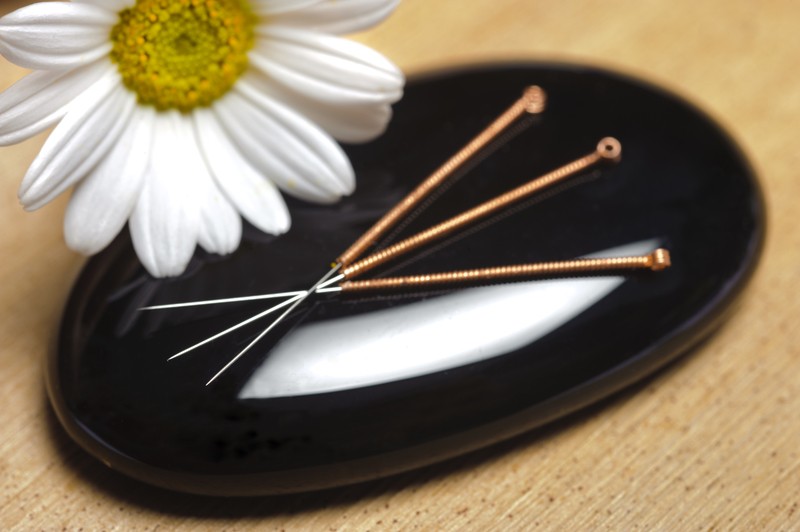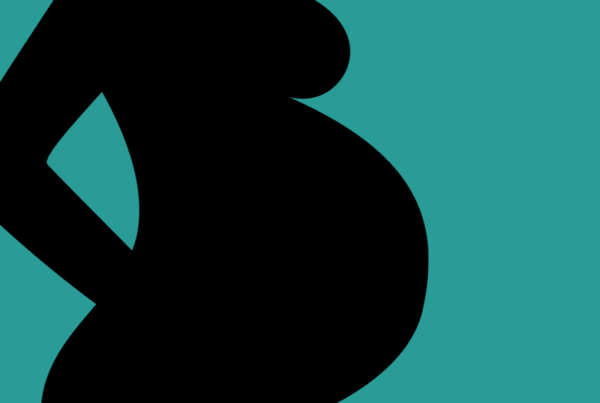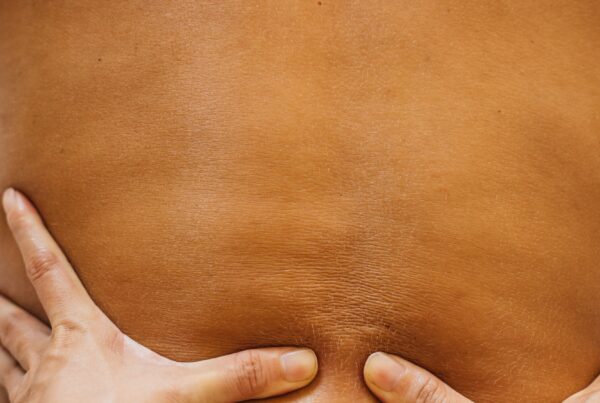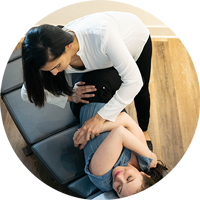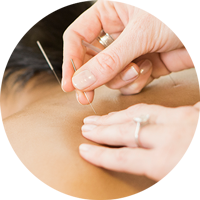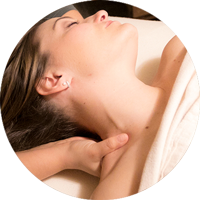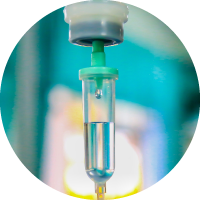This article was published in the latest issue of the Illinois Acupuncturist.
An Evidence-Based Medical Approach to Acupuncture and Endometriosis
Endometriosis is the growth of endometrial tissue outside of the uterine cavity and most commonly spreads to other organs in the pelvic region, such as the ovaries, bowel, bladder and tissue lining the pelvic region (Mayo Clinic). It is an often-painful disorder as this tissue acts the same way it would in the uterine cavity—thickening and shedding with the menstrual cycle. Endometriosis can cause fertility problems due to scar tissue building up and the formation of endometriomas on the ovaries. It is estimated that endometriosis affects 6-10% of reproductive women; though this number may be conservative considering that in a 2011 NICHD-led study, 11% of the women who had endometriosis showed no symptoms (NICHD, 2013). Endometriosis is a complicated, chronic disease that is leading an increasing number of women to acupuncture.
According to Traditional Chinese medicine theory, endometriosis falls into the category of excessive or abnormal bleeding. There are 4 causes of bleeding: traumatic injury, qi deficiency, heat, and blood stasis (Flaws, 1989). Most often, in women suffering from endometriosis, there is heat and stagnation; although, in some women, reckless blood due to qi deficiency may result especially if the bleeding occurs at the end of or just after menstruation (Flaws, 1989).
I examined three studies. Two studies shared the same goal of investigating the efficacy of acupuncture on the pain associated with endometriosis and the third looked at the effects of Chinese herbal medicine (CHM) on endometriosis. The first, a clinical study, Efficacy on endometriosis treated with electroacupuncture (Zhang, 2015), divided 72 women into two groups of 36 each: electroacupuncture (EA) and western medication (mifepristone, 12.5mg/day). Acupuncture was applied at Ren 6, Ren 4, Ren 3, Zigong, Spleen 6, 8, Large Intestine 4 and Liver 3. Deqi was achieved and EA (70 Hz in frequency and 3mA in intensity) was applied to Zigong, Ren 4 and Ren 3 with continuous wave. This treatment was done once every 2 days. Both treatments were given for 6 months. At the conclusion of the study, both forms of treatment showed decreased pain (94.4% in EA group and 91.7% in western medication group). Serum CA125 (tumor marker) was reduced in both groups, with the EA group being lower than western medication group. The most significant result was the recurrence rate 1-year later in which the EA group had a 6% recurrence rate and the western medication group had a 33.3% recurrence rate. This demonstrates significant clinical efficacy, though more research should be done.
The second study, a systematic review, on Acupuncture for pain in endometriosis (Zhu, 2011) examined 24 studies found on the Cochrane Database for randomized single or double-blind controlled trials comparing acupuncture (body, scalp or auricular) to either placebo/sham, no treatment, conventional therapies or Chinese herbal medicine. The women enrolled had a laparoscopic-confirmed diagnosis of endometriosis. They were measuring primarily for decrease in pain and secondarily improvement in quality of life scores, pregnancy rate, adverse effects and rate of recurrence. Only one trial fit the inclusion criteria, as it provided pain scores and cure rates. The data from the included study, involving 67 women, indicated that auricular acupuncture is more effective compared to Chinese herbal medicine for reducing menstrual pain.
The third and final study is a systematic review on Chinese herbal medicine for endometriosis (Flower, 2012). Two Chinese randomized control trials involving 158 women were used. The trials compared Chinese herbal medicine (CHM) to biomedical treatment, another CHM intervention, or CHM plus biomedical treatment versus biomedical treatment. The women in these trials had a laparoscopic diagnosis of endometriosis. They concluded that post-surgical administration of CHM might have comparable benefits to gestrinone but with fewer side effects. Oral CHM (neiyi pill) may have a better overall treatment than danazol and it may be more effective in relieving dymensorrhea and shrinking adnexal masses when used in conjunction with a CHM enema (neiyi pill and enema) (Flower, 2012).
This comparison of studies shows the great potential that acupuncture can have on reducing endometriosis-associated pain and recurrence rate. In my practice, I see many women struggling to conceive while dealing with the effects of endometriosis. Conventional medicine’s best treatments include laparoscopic surgery, hormonal regulation (birth control and other menstrual-halting medications) and pain medications, all of which have the potential for serious side effects. I think this is where acupuncture, and truly Chinese medicine as a whole, can provide great benefit, especially for the women who are concurrently trying to conceive.
Kate E. Phillippi, L.Ac, Dipl. OM, MSTOM, FABORM
Kate works at Aligned Modern Health, an integrative clinic, in downtown Chicago. She specializes in treating reproductive health and became a fellow of The American Board of Oriental Reproductive Medicine in 2015. Kate serves as the secretary for the Illinois Association of Acupuncture and Oriental Medicine (ILaaom) and is also a member of the American Society of Acupuncturists (ASA) and the American Society for Reproductive Medicine (ASRM). She is the editor of The Illinois Acupuncturist.
References
Flaws, B. (1989). Endometriosis, Infertility & Traditional Chinese Medicine: A Laywoman’s Guide. Boulder, CO: Blue Poppy Press.
Flower, A., Liu, J. P., Lewith, G., Little, P., & Li, Q. (2012). Chinese herbal medicine for endometriosis. Cochrane Database of Systematic Reviews Reviews. doi:10.1002/14651858.cd006568.pub3
Mayo Clinic. (2013, April 2). Endometriosis: Definition. Retrieved from: http://www.mayoclinic.org/diseases-conditions/endometriosis/basics/definition/con-20013968
National Institute of Child Health and Human Development (NICHD). (2013, April 22). Endometriosis: How many people are affected/at risk? Retrieved from: https://www.nichd.nih.gov/health/topics/endometri/conditioninfo/Pages/at-risk.aspx
Zhang, X., & Li, W. (2015). Efficacy on endometriosis treated with electroacupuncture. 35(4), 323-326. Zhongguo Zhen Jiu, 35(4), 323-326.
Zhu, X, Hamilton, KD, McNicol ED. (2011). Acupuncture for pain in endometriosis. Cochrane Database Systematic Reviews, (9):CD007864. doi: 10.1002/14651858.CD007864.pub2.:

